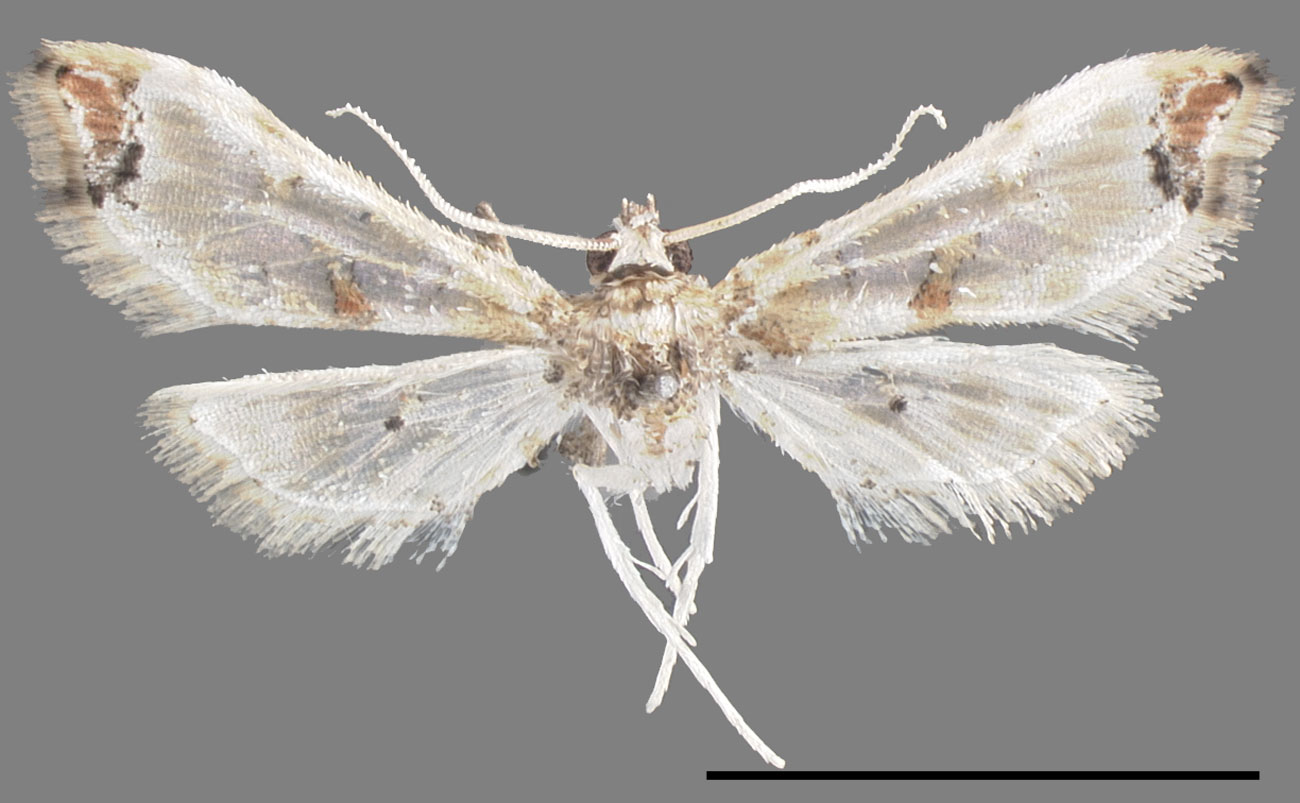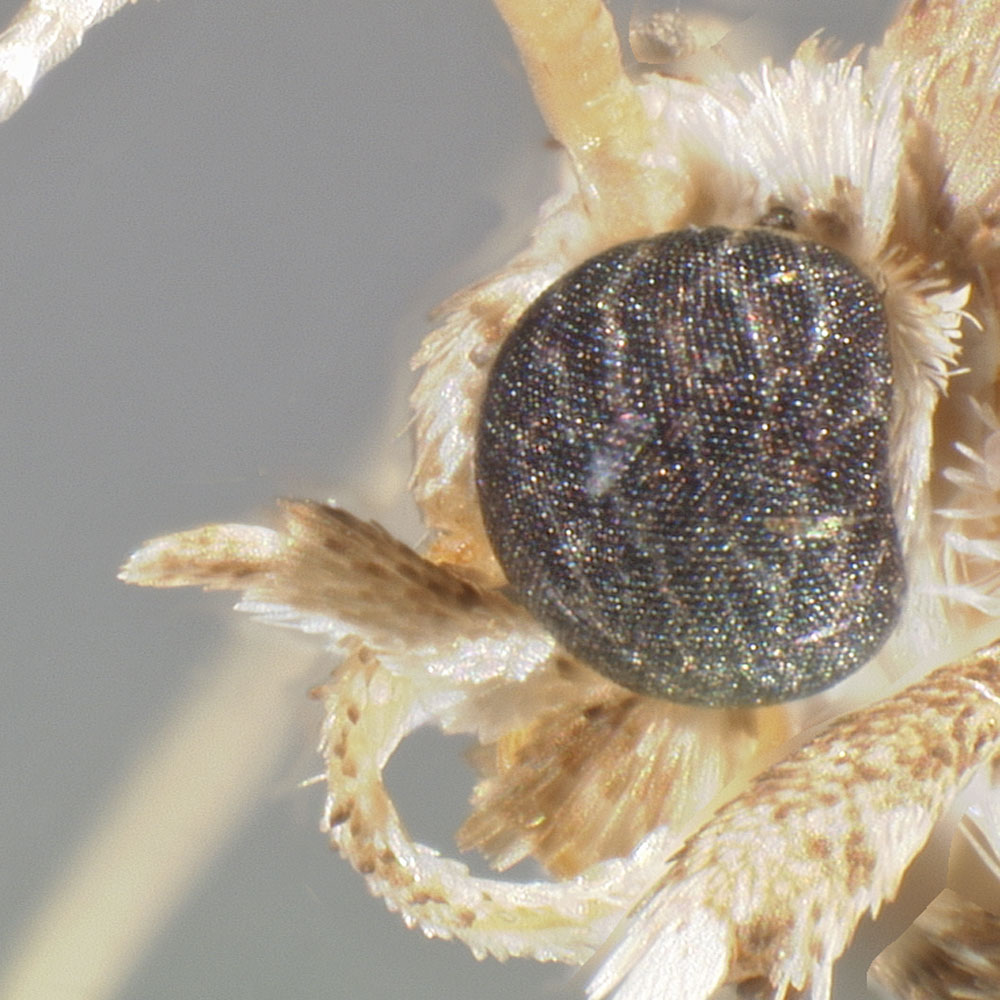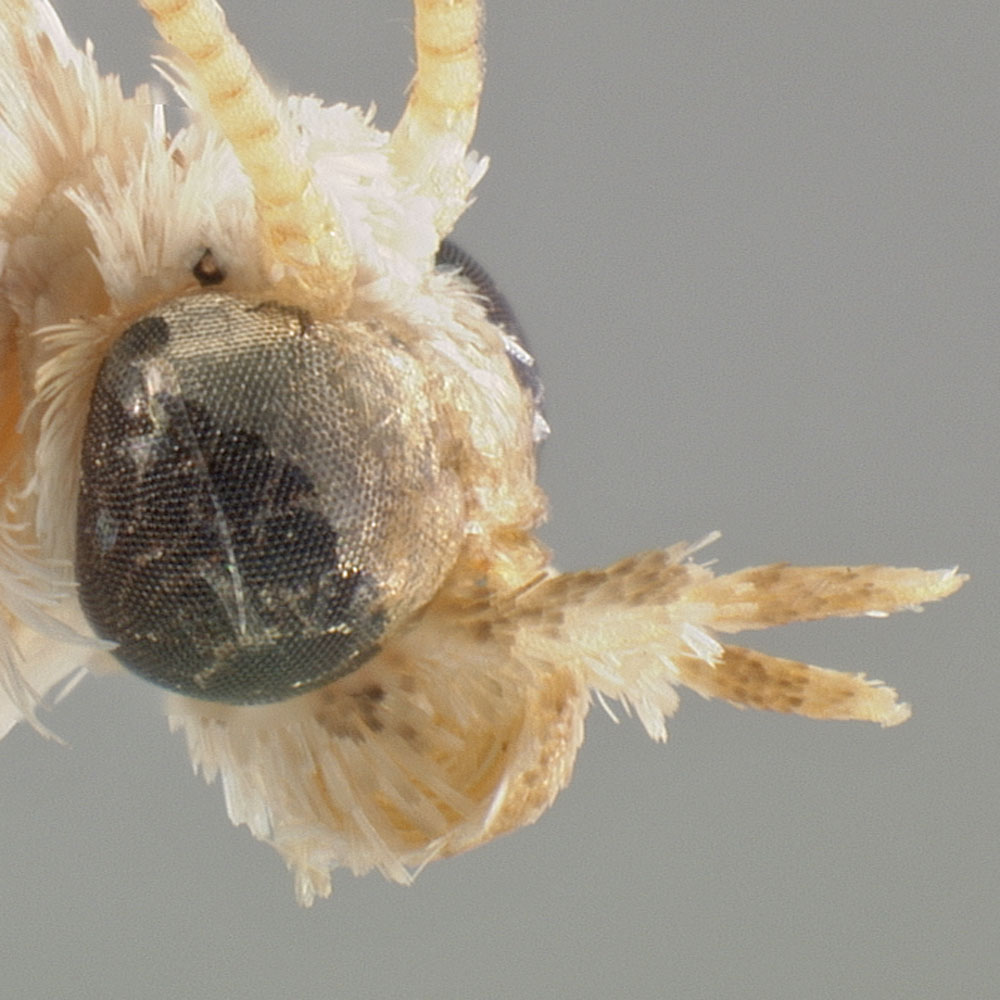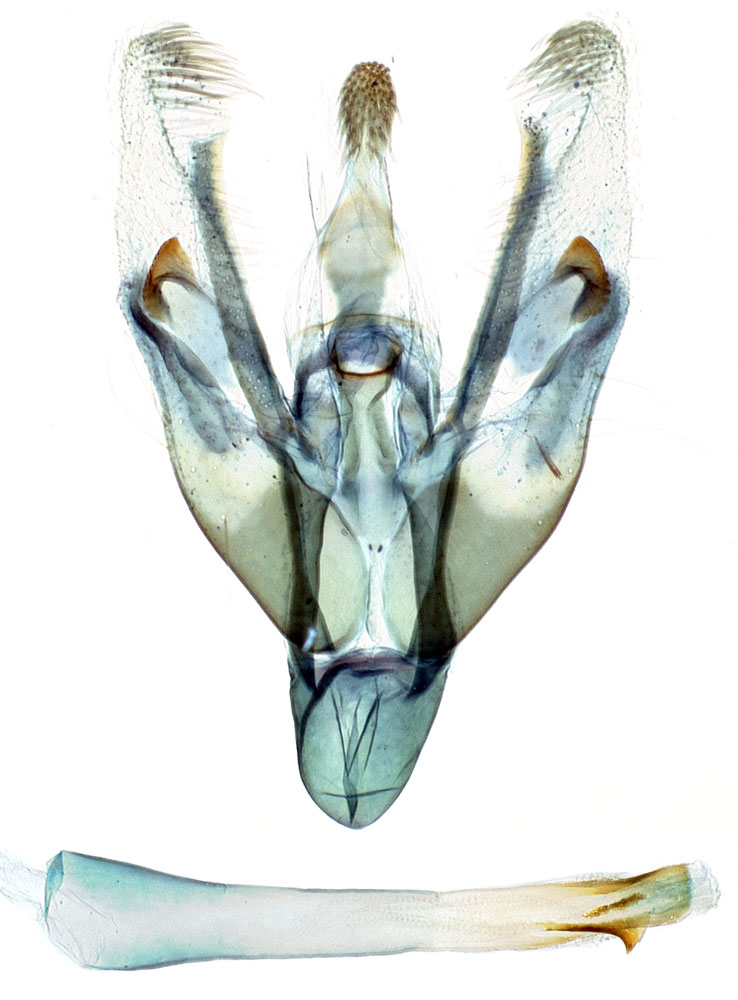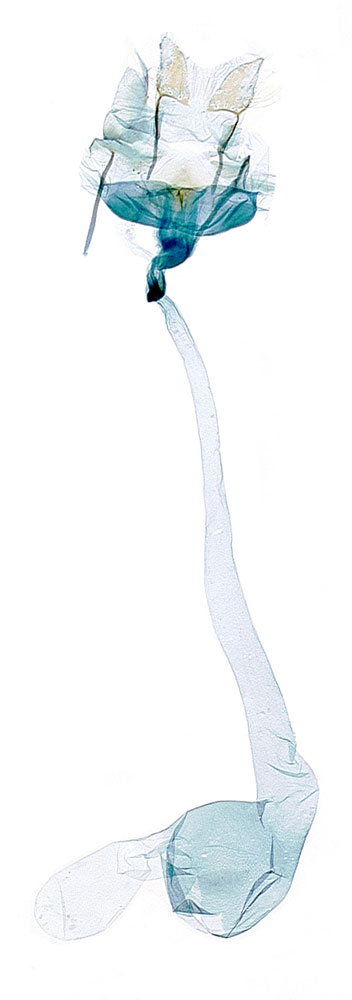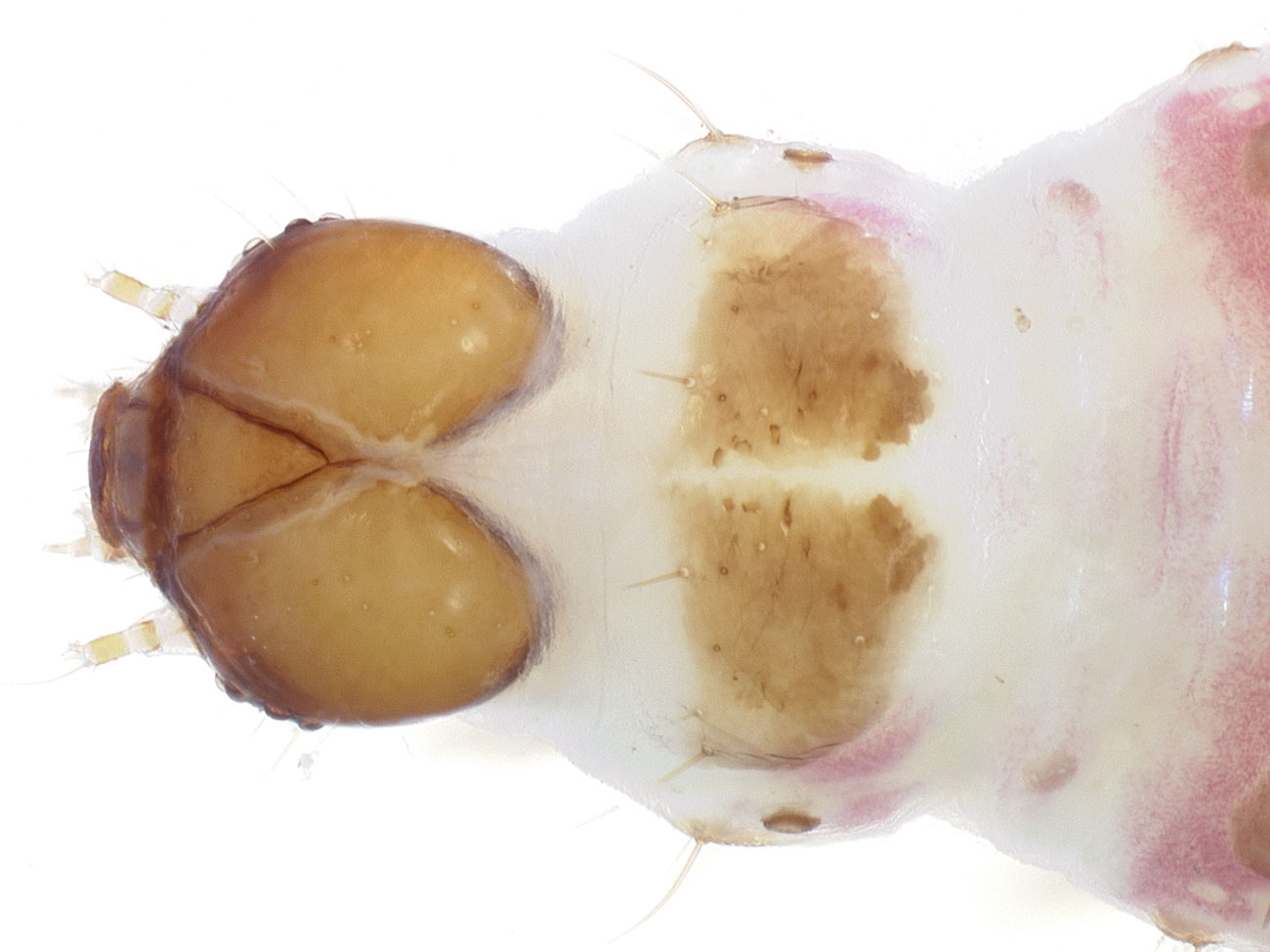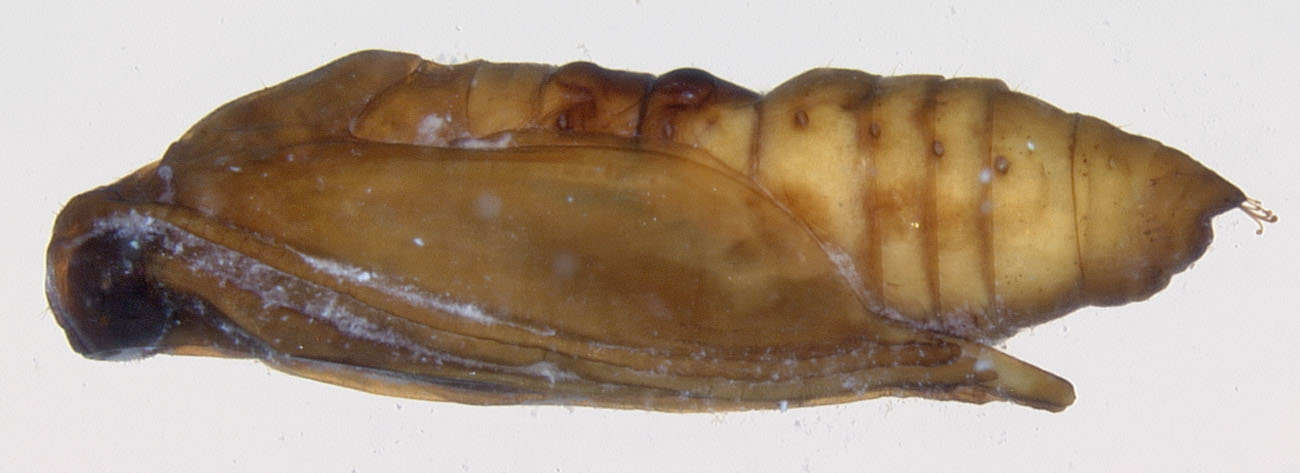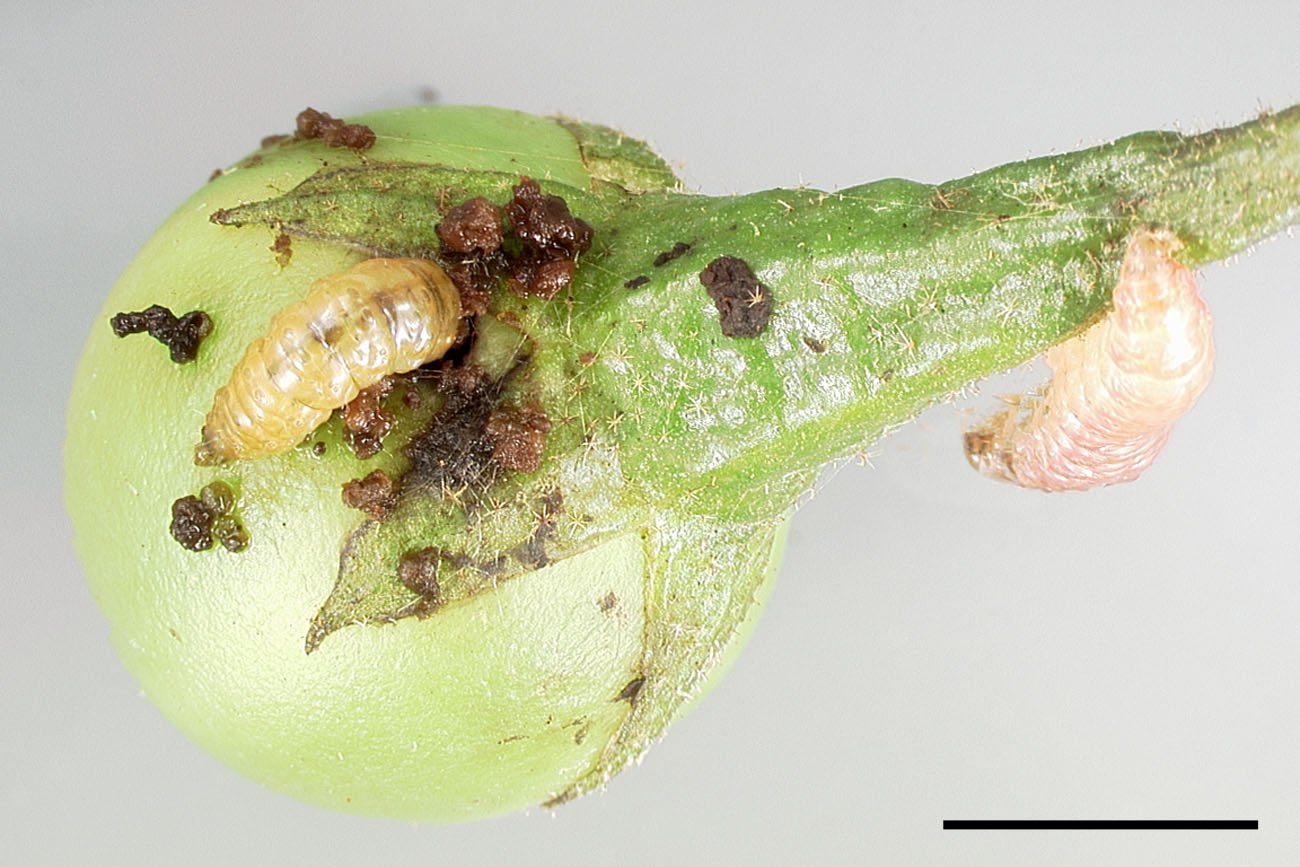Neoleucinodes torvis
|
Neoleucinodes torvis male habitus (Florida). Scale = 5 mm. |
|
Neoleucinodes torvis female habitus (Florida). T. S. Dickel Collection. Scale = 5 mm. |
|
Neoleucinodes torvis head of male. |
|
Neoleucinodes torvis head of female. |
|
Neoleucinodes torvis male genitalia. |
|
Neoleucinodes torvis female genitalia. |
|
Neoleucinodes torvis larva. |
|
Neoleucinodes torvis larva, head and prothorax. |
|
Neoleucinodes torvis pupa. |
|
Neoleucinodes torvis live larvae feeding and damage on turkey berry (Solanum torvum). Scale = 5 mm. |
Name
Neoleucinodes torvis Capps, 1948
Common name: Turkeyberry borer
Original combination: Neoleucinodes torvis Capps, 1948
Synonyms: Leucinodes pusilla Amsel, 1956
Alternative combinations: none
Classification: Pyraloidea: Crambidae: Spilomelinae, Leucinodes group
Adult recognition
Forewing length: 5.7–8.0 mm, relatively broad. The antennal sensilla are short and dense. Male genitalia have a scoop-shaped fibulaFibula:
Any projection on the face of the valva (not including the saccular process, if any).
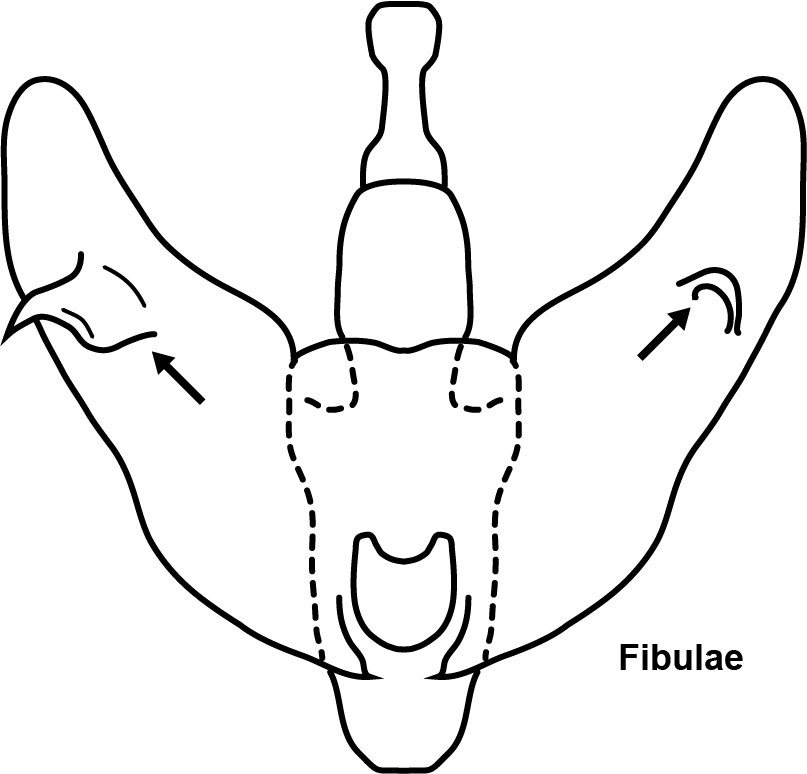 in the distal half of the valve, an inflated sacculusSacculus:
in the distal half of the valve, an inflated sacculusSacculus:
The ventro-basal area of the valva.
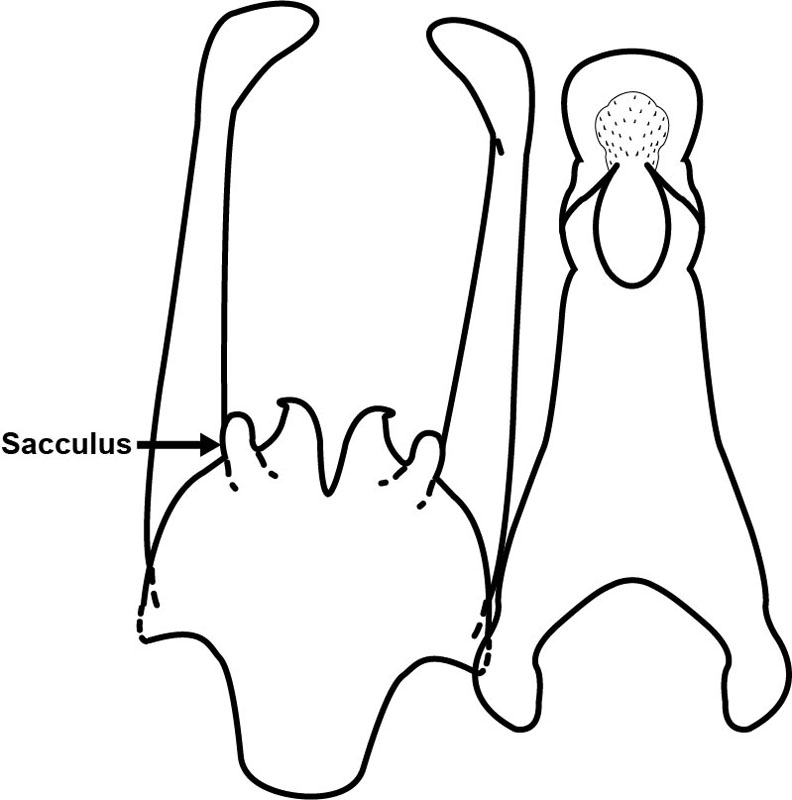 , and a triangular hook on the side of the phallusPhallus:
, and a triangular hook on the side of the phallusPhallus:
The intromittent part of the male genitalia, also known as the aedeagus.
 . Female genitalia have an appendix bursaeAppendix bursae:
. Female genitalia have an appendix bursaeAppendix bursae:
An appendix or pouch arising from the corpus bursae.
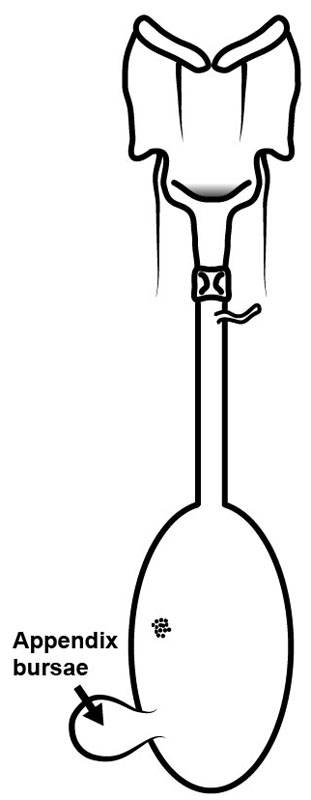 extended from the corpus bursaeCorpus bursae:
extended from the corpus bursaeCorpus bursae:
The enlarged, bulbous anterior end of the female genitalia.
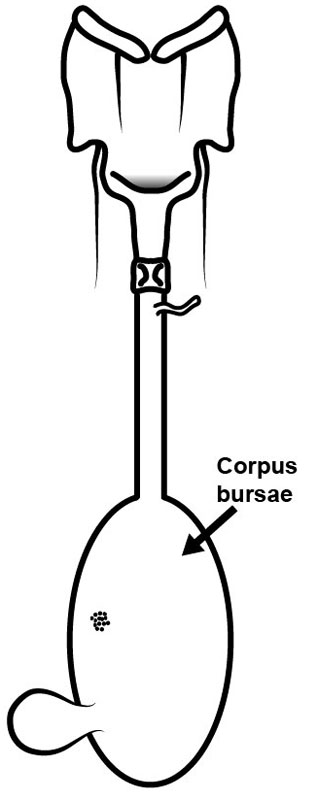 . The ostium has a pair of small, weak sclerites.
. The ostium has a pair of small, weak sclerites.
Immature stages
Full-grown larvae are 11–12 mm long and pink. They resemble other fruit-boring relatives, having one SV setaSeta:
A larval hair (pl. setae).
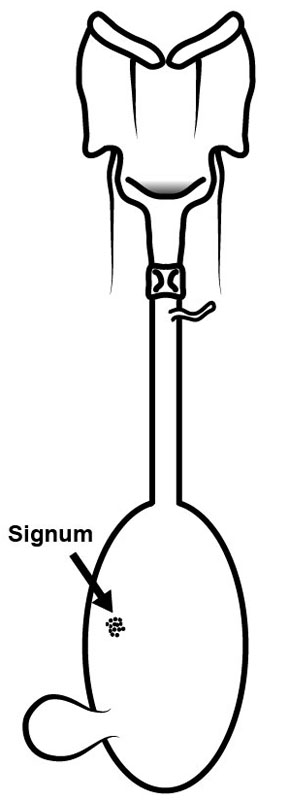 on A1 and the SD setaSeta:
on A1 and the SD setaSeta:
A larval hair (pl. setae).
 of A8 anterior of the spiracleSpiracle:
of A8 anterior of the spiracleSpiracle:
Respiratory openings, mainly of interest for larval chaetotaxy. One pair on most segments.
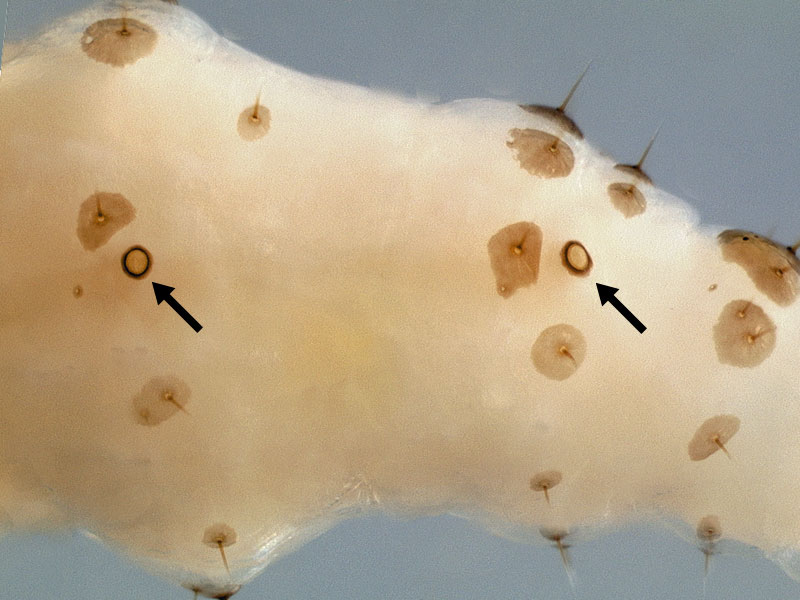 . The prothoracic shieldProthoracic shield:
. The prothoracic shieldProthoracic shield:
Also called the T1 shield. In the larva, the extensive sclerotized area of the dorsal half of the prothorax. It bears six setae on each side, and its color pattern is often diagnostic.
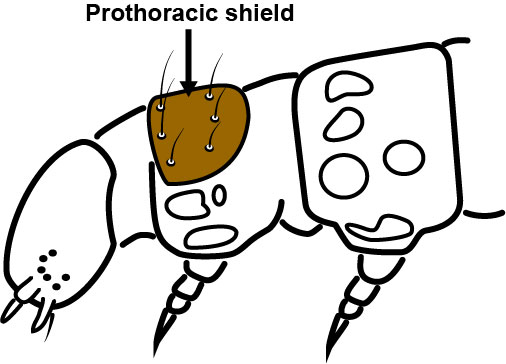 is pale brown with slightly darker spots on the middle posterior margin. The pinacula are pigmented, and the D1 pinacula have a small spot anterior of the setaSeta:
is pale brown with slightly darker spots on the middle posterior margin. The pinacula are pigmented, and the D1 pinacula have a small spot anterior of the setaSeta:
A larval hair (pl. setae).
 .
.
Similar species
Neoleucinodes torvis generally resembles other species of Neoleucinodes but is smaller than all. Most other species have longer, ciliate antennal sensilla. Neoleucinodes imperialis (Guenée) also has short sensilla, but it is larger, has a white anterior abdominal band, and two fibulae on the male valvae. The larvae of N. elegantalis have pinacula without pigmentation, and the D1 pinacula do not have an anterior spot.
Behavior
The larvae feed in the green fruit before it matures, commonly boring next to the calyx. One larva is found in each fruit. Pupation lasts 11 to 13 days in a thin silken cocoon outside the fruit.
Distribution
The species is widely distributed in the Caribbean, Central, and northern South America. In North America, it is rarely encountered in southern Florida. It also occurs in Brazil (MG), Colombia, CostaCosta:
(1) The anterior margin of the wing.
(2) In the male genitalia, the dorsal margin of the valva.
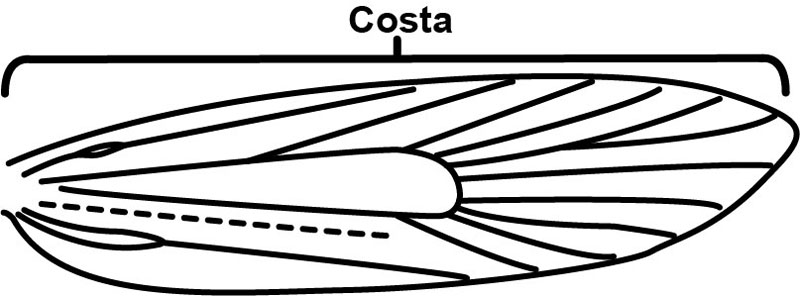 Rica, Cuba, Dominica, French Guiana, Guatemala, Guyana, Jamaica, Mexico, Panama, Peru, Puerto Rico, Surinam, and the Virgin Islands.
Rica, Cuba, Dominica, French Guiana, Guatemala, Guyana, Jamaica, Mexico, Panama, Peru, Puerto Rico, Surinam, and the Virgin Islands.
Hosts
Solanum rudepannum Dunal
S. torvum Sw. (turkey berry)
Comments
The species’ presence in Florida has been recorded only recently. A few adult specimens were caught in Homestead, FL in the 1980s and 1990s (T.S. Dickel). A population of larvae was discovered very recently infesting Solanum torvum in Broward County, FL.
Literature
Capps 1948Capps 1948:
Capps HW. 1948. Status of the pyraustid moths of the genus Leucinodes in the New World, with descriptions of new genera and species. Proceedings of the United Sates National Museum 98: 69-83, pl. 5-10.
Díaz and Solis 2007Díaz and Solis 2007:
Diacute;az AE and Solis MA. 2007. A new species and species distribution records of Neoleucinodes (Lepidoptera: Crambidae: Spilomelinae) from Colombia feeding on Solanum sp. Proceedings of the Entomological Society of Washington 109: 897-908.

